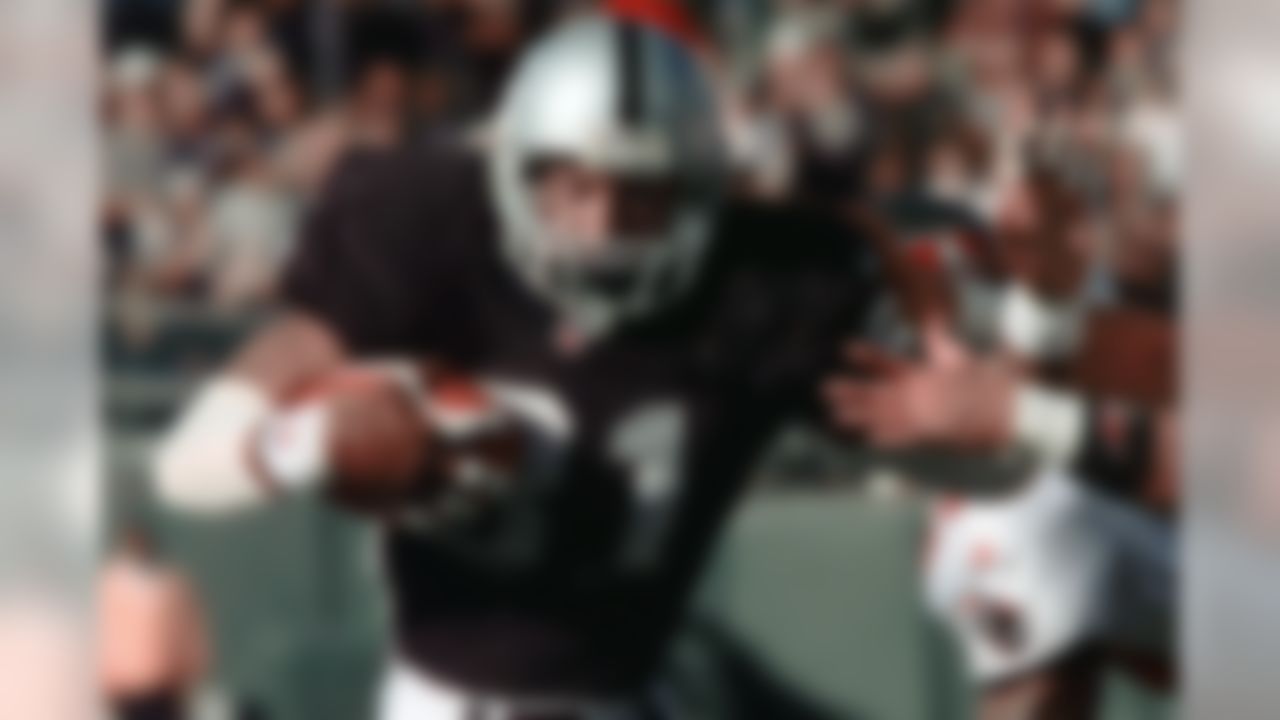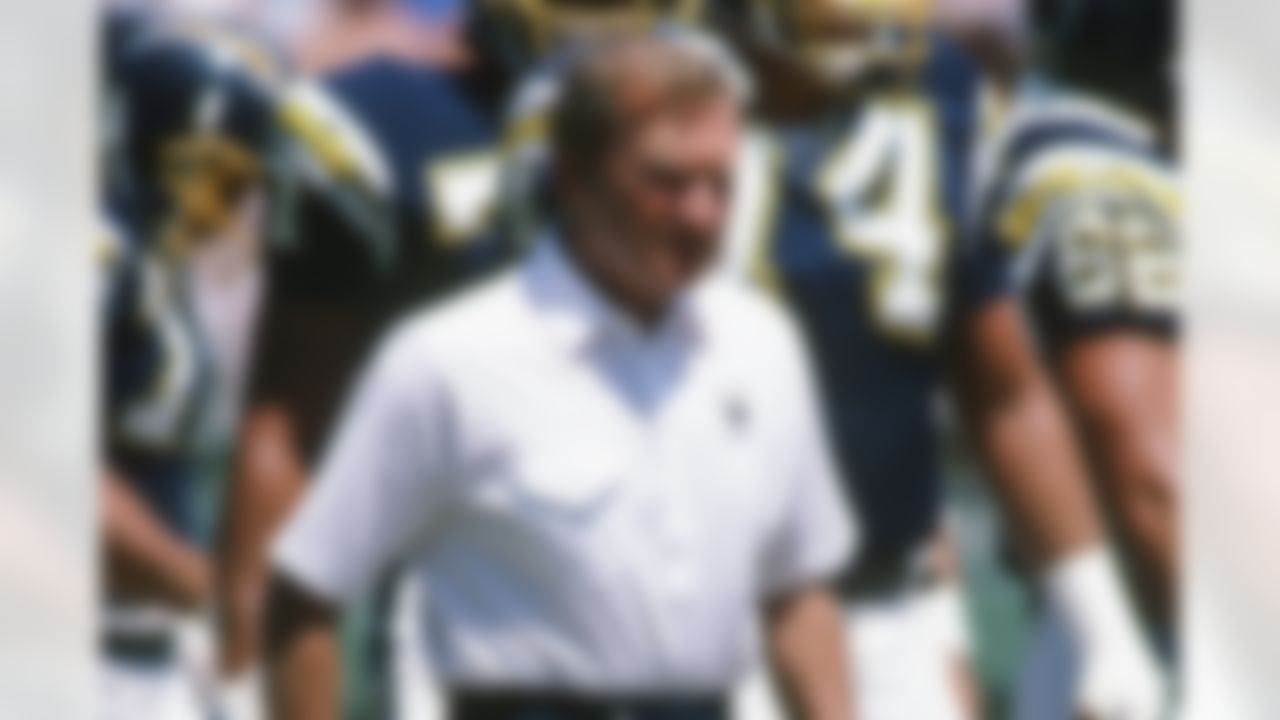NFL Photos | NFL Photography Gallery | NFL.com
Hall of Fame Nominees
The list of nominees for the 2012 Hall of Fame Class was released Wednesday, with some new names, old names, and guys you might have never heard of.
Picking the 10 best candidates out of 103 is a task only a tad easier than doing the power rankings. What makes narrowing the field challenging is taking into account each player, coach or contributor's impact on the league. As an NFL historian, I take it very seriously. Saying that Jerome Bettis is not deserving of top-10 status is not a whimsical statement. He was fantastic, but never the NFL's best running back.
While that bar might seem too high, gauging a player's Hall of Fame credentials lends itself to some tough scrutiny. Sterling Sharpe and Sam Mills got left behind. But the hardest cuts were former Atlanta tackle Mike Kenn and Buffalo's Mr. Do-It-All, Steve Tasker. Tasker, the greatest special-teamer of all-time, made it to 11th, getting beat by a player who also had his initial success on special teams.

Tim Brown's career started as a wide receiver with long-term potential, although he was an explosive kick returner right out of the gate. The potential came to fruition as No. 81 recorded nine consecutive 1,000-yard seasons, and became the first wideout to lead the AFC in receiving yards for three consecutive seasons (1993-95). Consider Brown to be the NFL's version of a baseball Hall of Famer. He hit some huge milestones, similar to getting 3,000 hits or 500 home runs. The all-time Raiders great finished his career with more than 1,000 catches, more than 100 touchdowns, and nearly 20,000 all-purpose yards. He's a member of the NFL's All-Decade team of the 1990s.

Dermontti Dawson replaced a legend in Mike Webster, and then became one himself. The starting center on the 1990s All-Decade Team took a few years to become an elite player, but once he did, there was no one better. Dawson was not only a Pro Bowl player, but was named first-team All-Pro six consecutive seasons from 1993-1998. Ultimately, hamstring and knee problems derailed the last two seasons of his illustrious career, but Dawson was so effective in his prime that no Steelers player has worn his No. 63 since he hung 'em up.

Gil Brandt might not be the biggest name on the list, but he's the right name. As the lone "Contributor" to make the top 10, he was also a lone wolf, using computers to advance the scouting process in the mid-1960s. Brandt's desire to be ahead of the curve often led him to help Tom Landry and the Cowboys acquire future All-Pros in strange places. Six-time Pro Bowl safety Cliff Harris was uncovered at Oauchita Baptist while newly minted Ring of Honor member Drew Pearson was a free agent out of the University of Tulsa. Long recognized as one of the most respected personnel men in league history, Brandt's draft direction helped build five Super Bowl teams from the ground up. (AP Photo/NFL Photos)

Terrell Davis was not a small-school gem that the likes of Gil Brandt had to find. But it was his special teams play and work in camp that caught Mike Shanahan and his coaching staff's attention in 1995. The sixth-round draft choice wasn't supposed to be a workhorse back, but became the NFL's elite rusher in the late 1990s with 6,413 yards in four seasons. Yes, injuries cut his career short, but no back has ever had a better two-year period than Davis in 1997 and 1998, when he won Offensive Player of the Year, the NFL MVP, Super Bowl MVP, and became the third player to rush for more than 2,000 yards in a single season. Dominance in a finite period is just as impressive -- and important -- as being good over the long haul. Davis was at his best against great opponents, and that's the measure of a Hall of Fame player.

The definition of a Hall of Famer is often hard to capture with a stat, a great game, or even career accomplishments. So how about legacy? Don Coryell modernized the passing game, taking the tenets of AFL coaching legend Sid Gillman and tweaking them with the likes of a pass-route numbering system that created the most prolific offenses in the mid-1970s (Cardinals) and early 1980s (Chargers.) Many fans are aware of Dan Fouts, Kellen Winslow, and the ridiculously productive "Air Coryell" attack in San Diego. But few realize that the three-time Super Bowl champion Cowboys of the 1990s essentially ran his offense. The coaching legend was no less than an all-time innovator.

If there is one guy on this list of 10 certain Hall of Famers who just flat out kicked ass, it's Cortez Kennedy. You could make the argument that the best player in pro football in 1992 played defensive tackle on a 2-14 team. While the Seahawks were awful, their third-year defensive tackle out of the University of Miami was unblockable. He had 14 sacks and four forced fumbles from the interior line. How about being named Defensive Player of the Year on a two-win team that featured Dan McGwire and Stan Gelbaugh at quarterback? Oh, and by the way, Kennedy went to eight Pro Bowls and was named to the NFL's 1990s All-Decade Team.

How do you know when a guy is good? Well, if he's an offensive lineman, it's when you don't hear his name. Willie Roaf didn't get called for too many penalties, nor did he get beat often by the defensive end across from him. As if being an 11-time Pro Bowl selection isn't enough of a credential to get air-mailed into the Hall of Fame, consider that he walked away from the game having made four straight as a member of a Chiefs offense that featured Trent Green, Priest Holmes and Larry Johnson in their primes. Essentially, Roaf never struggled in pro football in a 13-year career filled with accolades, like the All-Decade team of the 1990s and 2000s. He came, he saw, he won.

It's embarrassing that Cris Carter isn't in the Hall of Fame. Forget that he's an eight-time Pro Bowl selection. Forget the fact that he has 1,101 catches, which is third all-time behind Jerry Rice and Marvin Harrison. Instead, think about the quality of those catches. How many of those were shoestring grabs, clutch plays to pick up a third-and-eight? How about the fact that 130 of those catches went for touchdowns? From 1995-99 he caught a whopping 65 touchdown passes -- that's 13 per season. There's a good reason he and Rice were the starters on the NFL's All-Decade Team of the 1990s. It's because he was real good. Hall of Fame good.

Charles Haley had two careers, either of which are Hall of Fame-worthy. One, he was a speed-rushing linebacker who played the "Elephant" position in George Seifert's 49ers defense, racking up 63.5 sacks in six seasons. Then he became one of the most disruptive players in pro football as a defensive end in Dallas, making a solid Cowboys team dominant, en route to three Super Bowl wins in four seasons. At the end of an underrated career, Haley had 100.5 sacks. Not bad. That tells part of the story. His five Super Bowl rings (the most ever), and seven championship game appearances tell another: a Hall of Fame legacy.

Saying Bill Parcells belongs in the Hall of Fame is like ... ah, forget it. There's no cliché to insert here because nothing about Parcells is cliché', or sexy, for that matter. All he's about, and all he's done, is win ... at every stop. He took a mediocre Giants franchise to two Super Bowls and won them both. The "Tuna" changed the culture of a downtrodden franchise in New England, and had it in the Super Bowl after four seasons. The Jets were the worst team in the NFL in 1996. By 1998, Parcells was coaching them in the AFC Championship Game. In Dallas, a club that won 15 games in three seasons won 10 its first year with the old coach at the helm. Parcells developed the careers of so many, from Phil Simms, Lawrence Taylor and Bill Belichick, to Curtis Martin, DeMarcus Ware and Tony Romo. He's a legend, and a certifiable shoo-in for the Hall.




